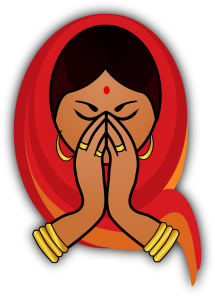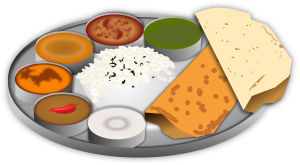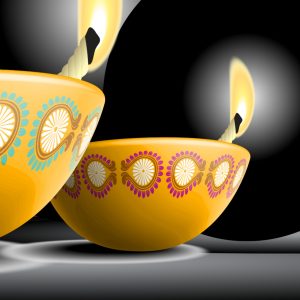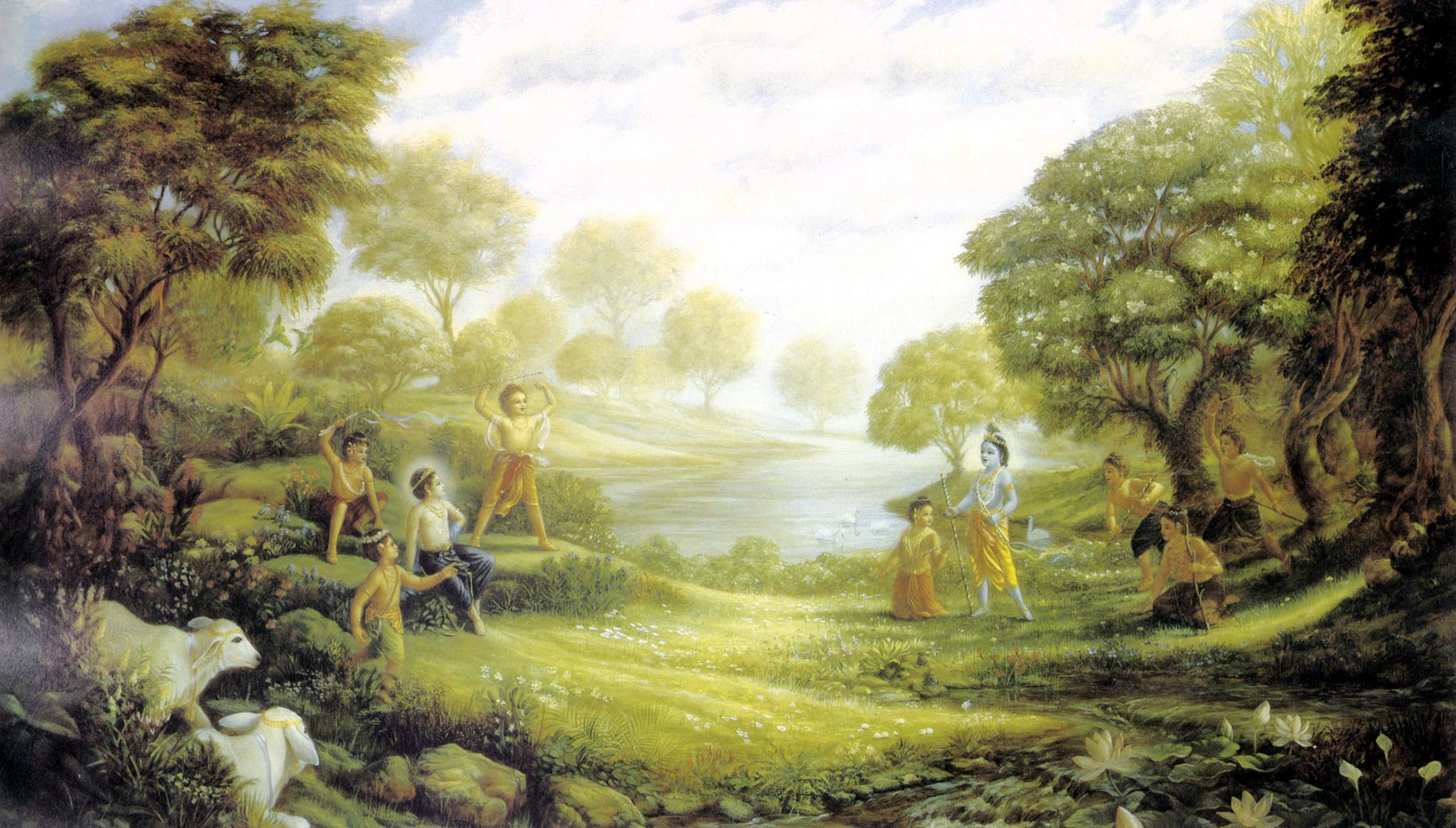 Jñāna-śakti dāsa: I have a question about the husbands of the gopīs in Vraja. Are they somewhat in a mood of aiśvarya towards Kṛṣṇa (the consideration of Śrī Kṛṣṇa’s opulence and majesty)?
Jñāna-śakti dāsa: I have a question about the husbands of the gopīs in Vraja. Are they somewhat in a mood of aiśvarya towards Kṛṣṇa (the consideration of Śrī Kṛṣṇa’s opulence and majesty)?
Śrīla Bhaktivedānta Nārāyaṇa Mahārāja: No, not at all. They are always in a mādhurya mood (the consideration of Kṛṣṇa as one of the cowherd folk). There is an abundance of aiśvarya in Vṛndāvana, but it is always covered by mādhurya, or sweetness, that is, a sense of a sweet, human-like relationship with Kṛṣṇa.
Sometimes, when there is a need, on very rare occasions, opulence comes to serve Kṛṣṇa there. For example, Kṛṣṇa’s lifting of Govardhana Hill was a pastime of great opulence and majesty, but all the gopas were thinking that they were helping Him to lift it. When Nanda Bābā and Yaśodā heard and saw Kṛṣṇa lifting Govardhana, they never considered that He was personally lifting it. Rather, they were of the conviction that “We have worshiped Nārāyaṇa, and by His mercy He is 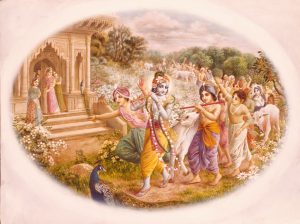 lifting this hill through Kṛṣṇa.”
lifting this hill through Kṛṣṇa.”
Śrīpāda Nemi Mahārāja: The gopas, the cowherd boys who Kṛṣṇa plays with in the fields, are they also married? Does Kṛṣṇa play with their wives? Or, is He playing with other gopas’ wives?
Śrīla Bhaktivedānta Nārāyaṇa Mahārāja: He is playing with His own wives.
Śrīpāda Mādhava Mahārāja: His own potencies.
Śrīla Bhaktivedānta Nārāyaṇa Mahārāja: He is playing with His most beloved gopīs.
By the influence of Yogamāyā, the gopīs seem to have husbands. This was arranged by Yogamāyā so that the gopīs can enjoy parakīya-bhāva (the mood of a paramour) with Kṛṣṇa, as there is not as much rasa, or mellow taste, in svakīya-bhāva (the mood of Kṛṣṇa’s wife, or queen).
Trilokanātha dāsa: Śrīla Gurudeva, I have one other question about a devotee’s name. My wife’s name is Mahojjvala. When Śrīla Prabhupāda gave her this name, the devotees told her that it means ‘great light.’ She was not satisfied with this explanation. Now she is wondering about the true meaning of her name.
Śrīla Bhaktivedānta Nārāyaṇa Mahārāja: Did your Gurudeva personally explain the meaning?
Trilokanātha dāsa: No. She didn’t get the explanation directly from Śrīla Prabhupāda. She received the name in a letter from him.
Śrīpāda Mādhava Mahārāja: Rādhikā ujjvala-rasera ācārya. [Śrīmatī Rādhikā is the ācārya of the mellows of amorous love (ujjvala-rasa).]
Śrīla Bhaktivedānta Nārāyaṇa Mahārāja: There are two types of mādhurya rasa; one is svakīya, the mood of wedded love, and one is parakīya, the mood of paramour love. Rādhikā is the embodiment of that parakīya mood in its highest stage. Unnata-ujjvala-rasāṁ sva-bhakti-śriyam.
This highest unnata-ujjvala rasa is only in Rādhikā, and therefore She Herself is Mahojjvala.
Mahojjvala does not simply mean ‘light.’ Rather, so much light emanates from the nails of Śrīmatī Rādhikā.
Śrīpāda Nemi Mahārāja: A devotee is asking this question: Those in the Nimbārka sampradāya are also chanting the names of Śrī Śrī Rādhā-Kṛṣṇa. What is their position?
Śrīla Bhaktivedānta Nārāyaṇa Mahārāja: Their mood is like svakīya, not pārakīya. They do not take into  consideration the separation of Śrī Śrī Rādhā-Kṛṣṇa – only Their meeting – but meeting without separation is like an ocean without waves. Their mood is flat, like a pond with no fish, no sea animals. We Gauḍīya Vaiṣṇavas have so many fish, tortoises, timiṅgilas, and wales; and high waves, like in Hawaii, up to forty feet.
consideration the separation of Śrī Śrī Rādhā-Kṛṣṇa – only Their meeting – but meeting without separation is like an ocean without waves. Their mood is flat, like a pond with no fish, no sea animals. We Gauḍīya Vaiṣṇavas have so many fish, tortoises, timiṅgilas, and wales; and high waves, like in Hawaii, up to forty feet.
At first the devotees of the Nimbārka sampradāya worshiped Śrī Śrī Rukmiṇī-Dvārakādīśa, and after some time they saw the prominence of Śrī Śrī Rādhā-Kṛṣṇa in Vṛndāvana and began to worship Them. But their worship is without waves. They have no idea of māna, prema-vaicittya, divyonmāda, or pravāsa. Śrīla Rūpa Gosvāmī has therefore remarked, “Fie on those who do not consider the separation of Śrī Śrī Rādhā-Kṛṣṇa.”
Śrīpāda Nemi Mahārāja: He is asking what is the destination of the devotees in the Nimbārka sampradāya? What planet do they go to?
Śrīla Bhaktivedānta Nārāyaṇa Mahārāja: They will go to Goloka, but not to Vṛndāvana.
Vrajanātha dāsa: Gurudeva, is Kṛṣṇa married to Śrīmatī Rādhikā in Goloka?
Śrīla Bhaktivedānta Nārāyaṇa Mahārāja: They are not married, but it is as if They are married.
Śrīpada Mādhava Mahārāja: It is like svakīya-bhāva.
Kanhaiyā-lāla dāsa: Śrīla Gurudeva, I heard in your class that all the golden mūrtis (Deities) of Sītā, who were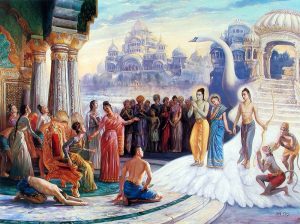 all established by Rāma, became gopīs in kṛṣṇa-līlā. But we also hear that Lakṣmī cannot enter the rāsa dance. How do we reconcile this?
all established by Rāma, became gopīs in kṛṣṇa-līlā. But we also hear that Lakṣmī cannot enter the rāsa dance. How do we reconcile this?
Śrīla Bhaktivedānta Nārāyaṇa Mahārāja: Because Sītā was svakīya (Rāma’s married wife) in rāma-līlā, she was abandoned. The golden Sītās understood that Kṛṣṇa is mādhurya [so they would be able to have a more intimate relationship with Rāma in that way]. That is why they wanted to become gopīs, and they became gopīs.
Śrīpāda Mādhava Mahārāja: Lakṣmī-devī had the abhimāna (selfconception) that, “I am a brāhmaṇī.” With this conception she was not willing to become the wife of a cowherd boy, and thus she could not enter a paramour relationship with Śrī Kṛṣṇa.
Śrīla Bhaktivedānta Nārāyaṇa Mahārāja: Sītā had no brāhmaṇī abhimāna.
Aristanasana dāsa: Gurudeva, what was the destination of the dvija patnīs (the wives of the ritualistic brāhmaṇas)? They could not have Kṛṣṇa as their paramour in that situation. Did they become gopīs later?
Śrīla Bhaktivedānta Nārāyaṇa Mahārāja: In their next lives they will be gopīs, and then they will join Kṛṣṇa’s service. Out of great respect for brāhmaṇas and brāhmaṇa’s wives, Kṛṣṇa could not accept the brāhmaṇīs as lovers; but when they will take birth as gopīs He will accept them.
Śrīpāda Dāmodara Mahārāja: In Rāma’s sevā, is there also some bhakti-rasa?
Śrīla Bhaktivedānta Nārāyaṇa Mahārāja: Rāma? which Rāma?
Śrīpāda Dāmodara Mahārāja: Lord Rāmacandra. There was bhakti-rasa in His pastimes, wasn’t there? How can we say that before Śrīla Rūpa Gosvāmī there was no bhakti-rasa? In Rāma’s sevā there is āśraya (the devotee, the abode of loving service) and viśaya (the Lord, the object of that loving service).
Śrīla Bhaktivedānta Nārāyaṇa Mahārāja: In rāma-līlā we find the mood of vātsalya-rasa in Kauśalya. We find also sakhya-rasa, although that sakhya-rasa is mixed with aiśvarya (the mood of awe and reverence). Vibhīṣaṇa and Sugrīva are examples of this type of sakhya-rasa, whose spirit of friendship was mixed with that of a servant. Their friendship with the Lord was not as sweet as the sakhya-rasa of Vṛndāvana.
Śrīpāda Dāmodara Mahārāja: But some bhakti-rasa is there, isn’t it?
Śrīla Bhaktivedānta Nārāyaṇa Mahārāja: In rāma-līlā, mādhurya-rasa reached only up to the level of svakīya, wedded-love, not parakīya, the love of paramours.
Śrīpāda Dāmodara Mahārāja: Then what is the difference in the bhakti of Ayodhyā and bhakti-rasa?
Śrīla Bhaktivedānta Nārāyaṇa Mahārāja: That is a different thing. Rāma is second to Kṛṣṇa. He is superior to Lord Nṛsiṁhadeva.
Vrajanātha dāsa: Gurudeva, Dāmodara Mahārāja is saying that you often explain that before Śrīla Rūpa Gosvāmī, the ācāryas did not explain bhakti-rasa. My understanding of your words is that in rāma-līlā there is bhakti-rasa, but nobody explained it before Śrīla Rūpa Gosvāmī. Is this correct?
Śrīla Bhaktivedānta Nārāyaṇa Mahārāja: What about Hanumān? Does he have any relation with Rāma?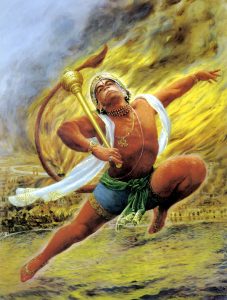
Śrīpāda Dāmodara Mahārāja: Yes.
Śrīla Bhaktivedānta Nārāyaṇa Mahārāja: What is that relation?
Śrīpāda Dāmodara Mahārāja: Dāsa; he is a servant.
Śrīla Bhaktivedānta Nārāyaṇa Mahārāja: Dāsa, or dāsya-rasa? Is there is no rasa?
Śrīpāda Dāmodara Mahārāja: In this relationship there is no rasa, is there?
Śrīla Bhaktivedānta Nārāyaṇa Mahārāja: Do Lakṣmaṇa and Bharata have no relation with Rāma?
Rohiṇī-nandana dāsa: [Translating Śrīpāda Dāmodara Mahārāja’s question into Hindi] Was bhakti-rasa present in rāma-līlā, or not?
Śrīla Bhaktivedānta Nārāyaṇa Mahārāja: Bhakti-rasa was explained by Śrīla Rūpa Gosvāmī. Besides him, who else explained the stages of prema beyond sthāyī-bhāva*? Who explained its different levels?
Rohiṇī-nandana dāsa: So, bhakti-rasa was present before Śrīla Rūpa Gosvāmī, but it was not explained by anyone before him? It is that all these stages of prema – like bhāva, anubhāva and so on – were simply not explained until Rūpa Gosvāmī?
Śrīla Bhaktivedānta Nārāyaṇa Mahārāja: Was bhakti-rasa present in Goloka Vṛndāvana? Was Śrīla Rūpa Gosvāmī not present there as well?
* “Prior to Svayam Bhagavān Śrī Caitanya Mahāprabhu, different Vaiṣṇava ācāryas had established, preached, and propagated bhakti-tattva. However only Śrī Rūpa Gosvāmī, being empowered by Śrī Caitanya Mahāprabhu, further developed that bhakti-tattva into bhakti-rasa. He described this subject elaborately in his Bhakti-rasāmṛta-sindhu and Ujjvala-nīlamaṇi. He wrote that the bhakti-lātā-bīja in the form of kṛṣṇa-sevā-vāsanā (the tendency or inclination to serve Kṛṣṇa) develops sequentially from śraddhā to niṣṭhā, ruci, and āsakti. When it comes to the stage of rati, it is called sthāyī-bhāva. When the four bhāvas, namely vibhāva, anubhāva, sāttvika, and vyābhicārī meet together in a combined form in this sthāyī-bhāva, then rati in the form of sthāyī-bhāva is transformed into a relishable and supremely astonishing condition called bhakti-rasa” (Ācārya Kesarī Śrī Śrīmad Bhakti Prajñāna Keśava Gosvāmī – His Life and Teachings, Part 5).
“Bhakti-rasa is of twelve varieties and each of these has its own sthāyī-bhāva. For example: (1) the sthāyī-bhāva of śānta-rasa is śānta-rati (tranquillity); (2) the sthāyī-bhāva of dāsya-rasa is dāsya-rati (affection in servitude); (3) the sthāyī-bhāva of sakhya-rasa is sakhya-rati (friendship); (4) the sthāyī-bhāva of vātsalya-rasa is vātsalya-rati (parental affection); (5) the sthāyī-bhāva of mādhurya-rasa is madhura-rati (conjugal love); (6) the sthāyī-bhāva of hāsya-rasa is hāsa-rati (laughter); (7) the sthāyī-bhāva of adbhuta-rasa (wonder) is vismāyā-rati (astonishment); (8) the sthāyī-bhāva of vīra-rasa (heroism) is utsāha-rati (enthusiasm); (9) the sthāyī-bhāva of karuṇa-rasa (compassion) is śoka-rati (sorrow or lamentation); (10) the sthāyī-bhāva of raudra-rasa is krodha-rati (anger); (11) the sthāyī-bhāva of bhayānaka-rasa is bhaya-rati (fear); and (12) the sthāyībhāva of bībhatsa-rasa is jugupsā-rati (disgust). Although bhakti-rasa is accepted to be of twelve varieties, in the final analysis five rasas are predominant” (Bhakti-rasāmṛta-sindhu-bindu, Verse 14, Overview).
Image/Art made possible by Pixabay.com & Krishnapath.org


